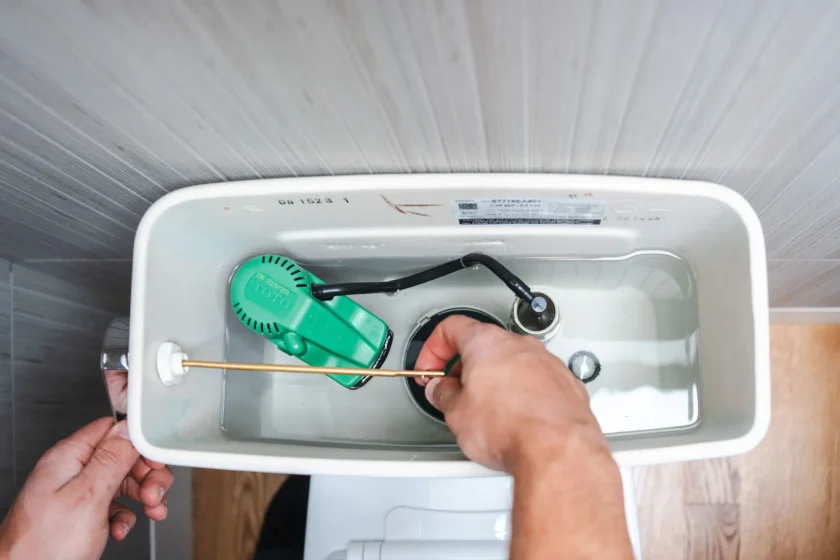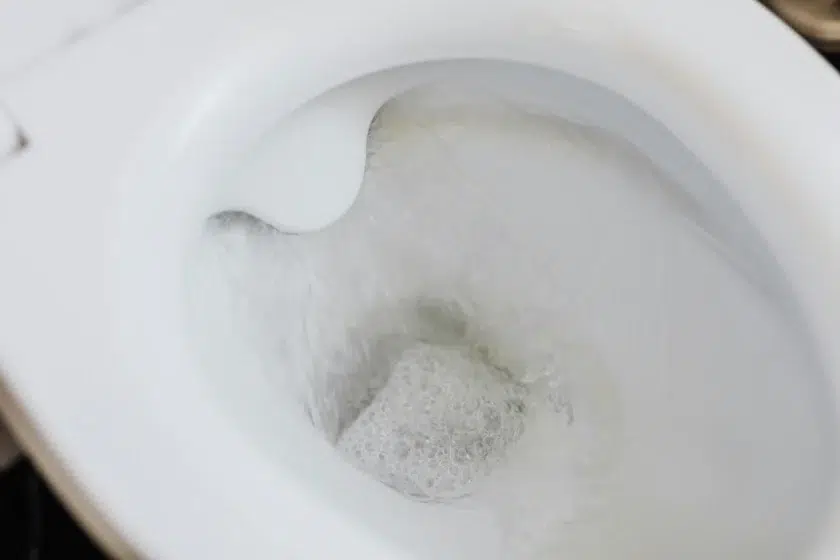If your toilet makes a brief refill sound every so often—like it “flushes” when no one is using it—you’re dealing with ghost (phantom) flushing. The good news: most fixes are simple and inexpensive. Below you’ll learn what causes ghost flushing, how to confirm the issue, step-by-step DIY fixes, and what to try if a new flapper didn’t solve it. When in doubt, Ben’s Plumbing’s licensed, insured, and bonded pros in Seattle can take this off your plate fast.
What is ghost or phantom flushing?
Ghost (or phantom) flushing is a short, periodic refill of the toilet tank even though nobody flushed. It happens because water is leaking from the tank into the bowl, dropping the tank level just enough to trigger the fill valve to top it off. The most common culprits are a worn flapper, a misadjusted refill tube, an overfill condition, or a failing fill valve.
The main cause of toilet ghost flushing
Nine times out of ten, it’s a leaky flapper or a damaged flush-valve seat that prevents a watertight seal. Over time rubber flappers warp, mineral scale builds up on the seat, or the chain is too tight to let the flapper fully close. Less commonly, the fill valve or even a cracked overflow tube/tank can be to blame.
How you can test for it
The dye test (2 minutes of work):
- Remove the tank lid and add 5–10 drops of food coloring (or a dye tablet) to the tank.
- Wait 15–30 minutes without flushing.
- If color appears in the bowl, the tank is leaking into the bowl—typically a flapper/flush-valve issue.
Water level check:
Mark the water level inside the tank and return in an hour. If the level dropped, a slow internal leak is present. If the level stops ~¼–½ inch below your mark, suspect the flapper seal. If it drains toward the bottom, suspect the flush-valve gasket.
Simple steps to stop a ghost toilet flush
Below is a safe DIY path many homeowners can follow. If anything feels outside your comfort zone—or your toilet is a specialty model—call Ben’s Plumbing services for help.

Tools: adjustable wrench, scissors, sponge/towel, replacement flapper (matched to brand/model), optional replacement fill valve.
- Reset the refill tube (often overlooked)
The small flexible tube from the fill valve should clip to the top of the overflow tube—not stick down inside it. If inserted too far, it can create a siphon and keep drawing water into the bowl. Trim the tube and clip it correctly. - Replace the flapper (the #1 fix)
In most cases, ghost flushing comes from a worn or warped flapper that no longer seals properly. Replacing it is a quick, inexpensive repair you can usually handle yourself. - Turn off the water supply valve (behind/to the left of the toilet) and flush to empty the tank.
- Unhook the chain and ears from the old flapper and remove it.
- Clean the flush-valve seat (where the flapper seals) with a non-abrasive pad. Mineral scale here causes micro-leaks.
- Install a new, model-appropriate flapper (don’t mix “universal” if your brand specifies a type).
- Adjust chain slack so there’s about ½ inch of play; too tight can hold the flapper open slightly.
- Turn water back on and test with the dye test again.
- Set the correct water level
The water level should sit about 1 inch below the top of the overflow tube. Use the float adjustment screw (older ball-cock) or slide clip (modern fill valves) to lower/raise the level. Overfilling can spill into the overflow, mimicking a leak. - Service or replace the fill valve (if hissing/running)
A constant hiss or intermittent refill after a proper flapper/level adjustment points to a worn fill valve. Debris can also prevent full shutoff. You can flush the valve per manufacturer instructions or replace it—most modern valves swap in under 20 minutes. - Re-test
Repeat the dye test. If the bowl stays clear and the tank holds level, you’re done.
Why fix it now? Besides the noise, a leaky toilet can waste dozens to hundreds of gallons per day, driving up your water bill. Worn flappers are among the most common household leaks.
Our pros fix leaks, noises, and ghost flushes fast
What to do if the toilet phantom flushing continues after replacing the flapper?
If you’ve installed the correct flapper and adjusted the level, but the ghost flush persists, look for these less obvious issues:
- Rough/damaged flush-valve seat: If the plastic/brass seat is nicked or scaled, it won’t seal even with a new flapper. A flush-valve replacement (or seat repair kit) may be required.
- Cracked overflow tube: Hairline cracks let water leak into the bowl. This usually means replacing the flush-valve assembly.
- Failing fill valve: If the valve can’t fully shut off or seeps through the refill line, replace it.
- Refill tube still siphoning: Ensure the tube clips above the overflow, with the outlet above the tank water line. Trim if necessary.
- Tank-to-bowl and bolt gaskets: Worn gaskets can drop tank level and trigger refills (you may also see moisture outside the tank). Inspect and replace as needed.
- Cracked tank (rare): A visible crack can slowly drain the tank; replacement is safest.
If you’ve worked through these checks and the toilet still runs periodically—or if you suspect multiple aging parts—it’s time to bring in a pro.
When it’s time to call a professional
While many ghost flushing issues can be solved with a new flapper or a quick adjustment, some problems are trickier—like a cracked overflow tube, a rough flush-valve seat, or hidden internal leaks. These repairs often require specialized tools and experience to avoid further damage.
If your toilet still flushes on its own after basic fixes, it’s best to let licensed plumbers step in. Professional repair ensures the leak is fully resolved, saves water, and prevents unexpected damage. You can learn more about our toilet repair services in Seattle and get help from certified experts.
Please Click to Call or Fill out our Contact Form Here



